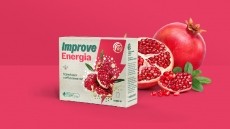PRIME pushes back on Sen. Schumer calls for FDA energy drink investigation

The company was responding to a much-publicized letter from the Senate Majority Leader to FDA Commissioner, Dr. Robert Califf, regarding PRIME Energy, the product’s caffeine content, and how it is marketed.
First launched in the UK in 2022, PRIME has experienced rapid growth due to viral marketing on TikTok. The company has touted itself on TikTok videos as "the fastest growing sports drink in history". The company launched its energy drink in 2023.
Central to Sen. Schumer’s letter is the combination of the beverage’s caffeine content (200 mg per 12 oz serving), and the alleged marketing of the beverage to children and teens.
“One of the summer’s hottest status symbols for kids is not an outfit, or a toy—it’s a beverage—but buyer and parents beware because it’s a serious health concern for the kids it so feverishly targets,” said Schumer in a press release.
“PRIME is so new that most parents haven’t a clue about it, but it is born from the reels of social media and the enigmatic world of influencers. Kids see it on their phones or as they scroll, and they actually need it and the problem here is that this product has so much caffeine in it that it puts Red Bull to shame, but unlike Red Bull, this product has one true target market: children under the age of 18, and that is why I am sounding the alarm and asking the FDA to investigate PRIME.”
Sen. Schumer’s letter to Commissioner Califf said that FDA’s investigation should focus on the following four items:
- Health claims by the ‘sports’ beverage PRIME
- The marketing of PRIME’s energy drink, which is social media and influencer-specific
- Caffeine content as well as sufficient warnings and/or labeling on both the product and its website
- Is this level of caffeine included in the product safe for children?
PRIME: “Our energy drink is not for anyone under the age of 18”
In response to Sen. Schumer’s statements, a spokesperson for PRIME told NutraIngredients-USA: “PRIME has two drinks on the market, PRIME Hydration and PRIME Energy. It is very important to make the distinction between the two products because they are vastly different.
“We started PRIME last year with the launch of Hydration, a healthier sports drink alternative that comes in a bottle. PRIME Energy, sold in a can, dropped in 2023 and contains a comparable amount of caffeine to other top selling energy drinks, all falling within the legal limit of the countries it’s sold in. It complied with all FDA guidelines before hitting the market and states clearly on packaging, as well as in marketing materials, that it is an energy drink and is not made for anyone under the age of 18.
“As a brand, our top priority is consumer safety, so we welcome discussions with the FDA or any other organization regarding suggested industry changes they feel are necessary in order to protect consumers.”
Growth
Energy drinks were one of the trends highlighted by The Vitamin Shoppe in its Health & Wellness Trends Report, which namechecked PRIME (and several other high growth brands).
Caffeinated energy drink sales have skyrocketed, according to the report, jumping over 40% at The Vitamin Shoppe in the first four months of the year.
“Since 2021, we’ve had over 20 high-profile launches from major brands in the energy drink category, including PRIME Energy, which was our top new launch of 2022 and will more than double sales in 2023,” said Jack Gayton, The Vitamin Shoppe’s divisional vice president of merchandising. (PRIME sales include both its hydration formulas and caffeinated energy drinks.)
Audience
Jason Chung, Director of the Esports and Gaming Initiative & Clinical Assistant Professor of Sport Management at NYU, spoke about this product and its marketing on-stage at NutraIngredients-USA's Sports & Active Nutrition Summit in San Diego in February as an example of how the supplements and nutrition industry faces an uphill battle against social clout, celebrity, and deep marketing budgets.
“Watching from the outside, it’s always interesting to see the nutrition industry pointing to clinical trials and successful science, but the industry doesn’t seem to know how to counter challenges from other industries, like in this instance when the big boys in food and beverage come to compete,” Chung told us.
Chung also noted that PRIME, with 16.7 mg of caffeine per fluid ounce, does not contain as much of the stimulant as some other energy brands on the market, such as Bang Energy (18.8 mg/floz) or GFUEL (18.8 mg/floz). It contains the same as Celsius Energy. Red Bull, by comparison, contains 9.5 mg/floz.
“If PRIME restricted its advertising to people 18 and up, there wouldn’t be an issue,” Chung told us. “But a huge part of Logan Paul and KSI’s (the faces of PRIME) audience is the younger demographics.”











